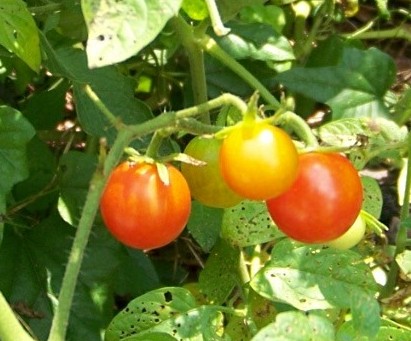|
Gardens Ablaze |
||
|
|
Reader's Questions - Edibles |
|
Site Map
Home
|
 Question: Is there a list of leaves and
stems etc. to find out what is edible? If so, where it might be? The
plants I have are pumpkin, summer squash, pickles (mini), broccoli, turnips,
corn stalks, green beans, snap beans, cukes, carrots, and watermelon. I
live in the northeast. When would be to late to plant? I am already harvesting
some veggies. I would like to extend my harvests as late as possible? Is
it wise to put fresh cow poop down in late fall to better support the soil
in spring growth? Question: Is there a list of leaves and
stems etc. to find out what is edible? If so, where it might be? The
plants I have are pumpkin, summer squash, pickles (mini), broccoli, turnips,
corn stalks, green beans, snap beans, cukes, carrots, and watermelon. I
live in the northeast. When would be to late to plant? I am already harvesting
some veggies. I would like to extend my harvests as late as possible? Is
it wise to put fresh cow poop down in late fall to better support the soil
in spring growth?Answer: There are lists all over the net with information on both edibles and poisonous plants, so due to time and space constraints, I will just answer the question at hand. Never put fresh cow manure directly on plants, especially plants you are growing for food. Use fully dried manure only, which can be added at any point in the growing season and use mulch over that to keep weeds down and keep the soil moist. You say you are in the northeast, but that encompasses several gardening zones. As such, you are probably running out of time in mid-July for anything except really fast growers, like radishes. Your best bet at this time of year is find out how long it takes from seed to maturity on any given plant, and then look at your first frost date on a zone map to determine if you have enough time to see it through. You can certainly extend harvests by using row covers, and by planting cool weather vegetables such as lettuce, cabbage, broccoli, pea, radish, onion, Swiss chard, etc. Below is the list of particular plants and their edible parts you specifically asked about above: Pumpkin: Edible parts include leaves, stems, flowers, seeds, fruit, and skin. Seeds can be boiled, toasted, or dried in the sun and eaten as a snack or added to baked goods, stems and leaves can be boiled or sautéed, flowers can be stuffed or sautéed (pull out centers first), fruit can be baked, boiled, steamed, or fried and used as a vegetable or as a dessert. Pumpkins can also be baked whole as as you would a winter squash. The skin is edible, but will generally be too tough unless it is a very young pumpkin. Summer Squash: Same family as pumpkins and the same parts can be used in the same ways. Cucumbers: I assume mini pickles are a variety of cucumbers. Stems and leaves of young plants are edible in moderation. Cucumber leaves have emetic properties (they induce vomiting) when taken in large quantities. Fruits, seeds, and skin are all fully edible. Broccoli: The whole plant that is above ground is edible including stems, leaves, and flowers . Older leaves and stalks are too tough to be of any value, however. Turnip: All parts of the plant including roots and flowers. Sweet Corn: The stalks, husks, cobs, and tassels are all edible, as in they won't poison you, but I don't know of anyone who actually uses them in cooking. Tough, stringy, and tasteless are all adjectives that come to mind. Green Beans: Leaves, pods, fruits. Snap Beans: Leaves, pods, fruits. Carrots: Entire plant is edible including root (the carrot itself) and leaves. Watermelon: Same thing as sweet corn. I don't have much information on this, but nobody seems to be making casseroles with watermelon vines, so I think it's safe to say that you should stick to the fruit, rind, and seeds, which are all perfectly safe.
Custom Search
|
|
|
Gardens Ablaze |
||